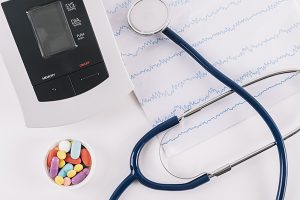Article re-posted with permission from Parker Hannifin Life Sciences Division.
Original content can be found on Parker’s Website.
RFID Tags and Medical Devices
Preventable Medical Errors Prompts U.S. FDA's UDI Rule
The influential 1999 report To Err is Human (National Academy of Sciences, Institute of Medicine) reported that preventable medical errors caused at least 44,000 and perhaps as many as 98,000 deaths each year, with total costs of between $17 and $29 billon. One response to that and other reports was the U.S. Food and Drug Administration’s Medication Barcode Rule of 2004, which built on the existing National Drug Code (NDC) — a universal product identifier for drugs. In turn, the FDA Amendment Act of 2007 directed the FDA to create a Unique Device Identifier (UDI) system for most medical devices distributed in the United States.
Automatic Identification and Data Capture Technologies for Medical Devices and Instruments
The FDA UDI Final Rule states: “ Automatic identification and data capture (AIDC) technology means any technology that conveys the UDI or the device identifier of a device in a form that can be entered into an electronic patient record or other computer system via an automated process.” AIDC (aka auto-ID) for medical devices may employ — at least in theory — any automatic data capture technology, including bar codes, radio frequency identification (RFID), magnetic stripe cards, optical 
Barcode Labels vs. RFID Tags
- RFID systems can have their reading distances “tuned” over a broad range through tag selection, tag antenna size and configuration, choice of tag reader/reader power, and Parker Chomerics RF shielding technologies.
- Barcode readers must have direct line of sight; RFID readers do not.
- Barcodes require either a specific orientation to their reader or a larger reader that is omnidirectional; RFID tags can be read in virtually any orientation.
- Barcode readers read one label at a time; RFID readers can read hundreds or thousands of tags at once.
- RFID tags can contain much more information than is practical on a most barcodes.
- RFID tags can be written-to (and/or locked and encrypted) at their point of use. For example, the number of autoclave cycles a device has endured could be recorded on both its tag and a database: data collection and its use become real-time.
So, what are the unique advantages of built-in RFID tags for medical devices?
The Unique Advantages of Built-In RFID Tags for Plastic Medical Devices
1) No adhesives to fail: Built-in RFID tags cannot peel off, like adhered inlay tags.
2) No plugs to fail: RFID tags that are molded into the device’s material are not dependent on any plugs or adhesives.
3) Optimal tag placement and protection: Molded-in tags are completely encapsulated within the medical device’s physical dimensions and fully protected by the device’s own material. One scratch on a surface inlay can damage the antenna and render the tag inoperable.
4) Streamlined device designs: Built-in RFID tags have no contaminant-harboring seams or manufacturing marks.
5) Completely tamper resistant: Molded-in tags are completely tamper resistant as long as the medical device itself is not compromised.
6) Covert in opaque objects: Built-in RFID tags “disappear” in opaque polymers, adding to their tamper resistance (and another deterrent to device counterfeiting).
7) Autoclave and gamma radiation resistant: In addition to RFID tags for single-use devices, embedded RFID tags can be specified that withstand a prescribed number of autoclave or gamma sterilization cycles — as long as the material is resistant, the tags will be resistant.
8) On-board tracking of device life cycles: Healthcare workers can be automatically alerted when to use new (fresh) products after a prescribed number of uses or autoclave cycles, or when a device is past its expiration date.
9) Protect intellectual property: Producing counterfeit medical devices with built-in RFID tags would be extraordinarily difficult. Counterfeiters do not have access to your data base, the source for identifying genuine tags. So using even moderately intelligent security steps to identify your tags would foil counterfeiters’ ability to issue compatible IDs.
10) Specify system settings automatically: Equipment can automatically recognize components with fully embedded (and protected) RFID tags, allowing the machines to configure themselves for a specified process or procedure, allowing for safer and more effective use.
The Summary
Compliance with the machine-readable requirement of the U.S. FDA’s UDI Final Rule can be achieved using proven, patented, industrial techniques for embedding RFID tags into molded components during their fabrication. Using embedded RFID tags for auto identification and data capture (AIDC) offers numerous differentiating capabilities over other auto-ID technologies, including high level anti-counterfeiting characteristics, damage/tamper resistance and automatic parameter settings.
Why Parker?
- Leverage Parker’s patented polymer fabrication technology for embedding RFID tags directly into your devices’ plastic materials.
- Quickly re-engineer existing molded polymer components to include built-in RFID UDI technology.
- Ensure both polymer and RFID performance as you investigate new or modified thermoset elastomers and thermoplastics for your devices.
- Improve your medical device lifecycle management: Achieve UDI compliance while offering expanded data utilization opportunities for your planning, production and distribution, as well as for your healthcare customers’ real-time tracking, locating and inventorying of your medical devices.
To learn more about how Gallagher Fluid Seals and Parker can help you fast track your FDA UDI compliance for polymer medical devices, contact us today.
